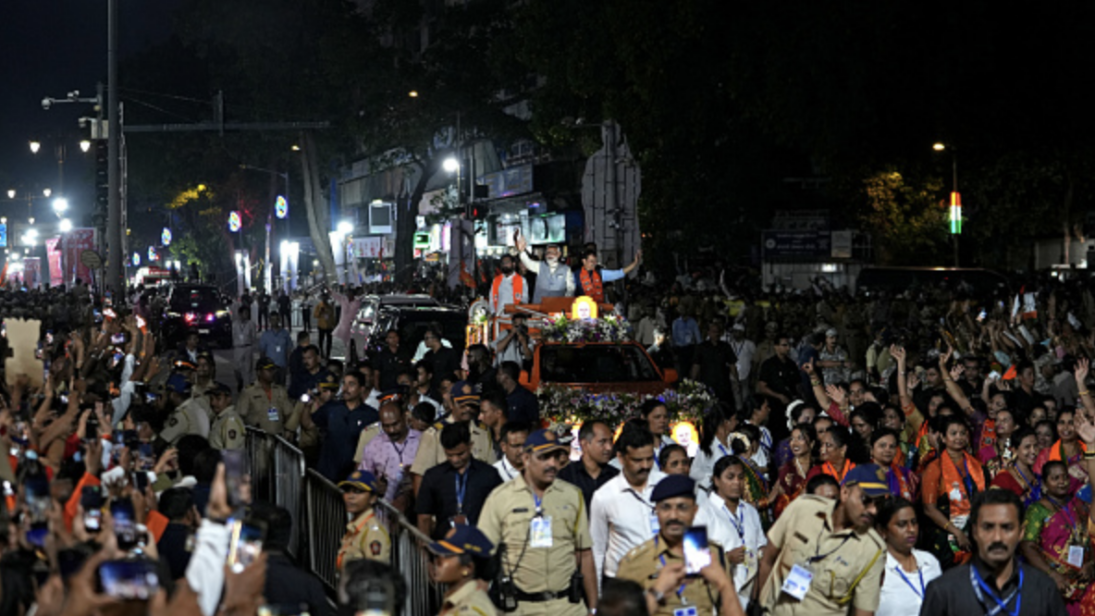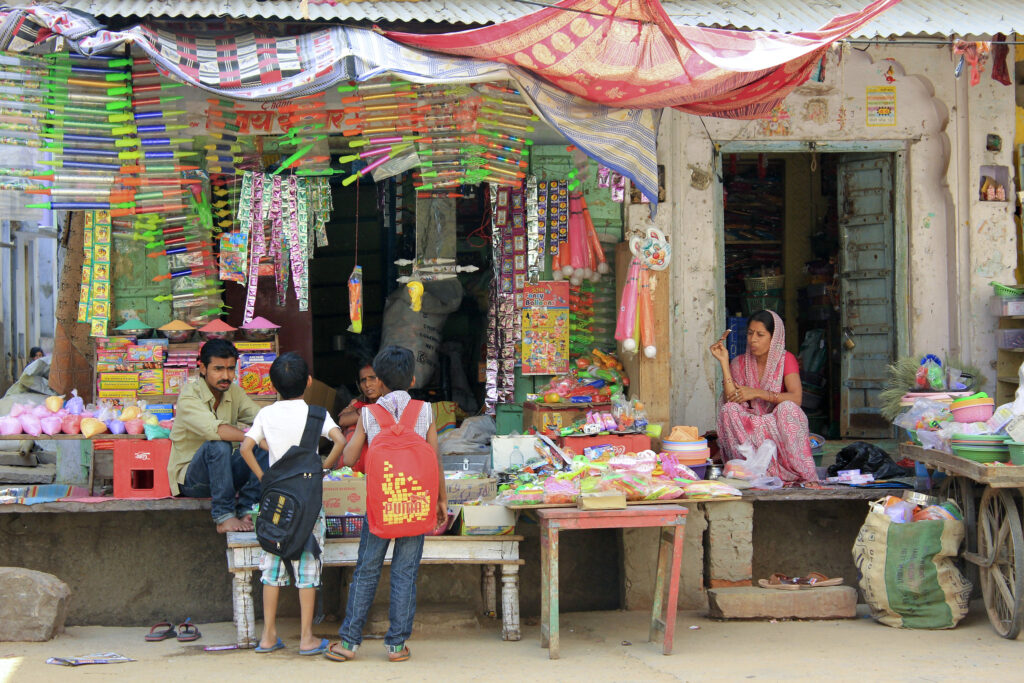
As 2024 comes to an end, India finds itself out of step with global trends. Prime Minister Narendra Modi’s government was not swept away by the global anti-incumbency wave. Conflicts in Europe and West Asia did not pose fundamental threats, nor did they roil India’s internal politics or its economy. The victory of President-elect Donald Trump in the U.S. presidential elections did not lead to the jitters now afflicting America’s allies and rivals alike. And in a year where geopolitical tensions seemed to be rising and India’s South Asian neighbors were struck by instability, New Delhi even managed to pull off a thaw in relations with China.
To a significant extent, India appears to still be in the economic and geopolitical sweet spot that it has occupied over the last few years. But that does not mean 2024 was uneventful, featuring everything from major domestic political surprises to allegations of a global extrajudicial assassination campaign against the Indian government. The economic warning signs that have been flashing in the second half of the year alongside the prospects of a turbulent global policy environment under Trump suggest that 2025 will be much more tumultuous.
Reinvigorating the economy remains one of Modi’s most complex challenges. And the prospect of a tariff war with the United States under Trump only adds to India’s risk factors.
Election Surprises
India’s ruling Bharatiya Janata Party (BJP) began the year exuding confidence, insisting that Modi’s time in power would leave a 1,000-year legacy and choosing “Ab Ki Baar, 400 paar” (“This time, more than 400 seats”) as its slogan for the April-May general elections. A victory of that size would have given the BJP a more than two-thirds majority in India’s lower house of Parliament, the Lok Sabha, crossing the threshold above which it could make fundamental changes to the Constitution. The party’s confidence was also boosted by the public’s muted reaction to several actions – including the arrest of two Opposition chief ministers on corruption charges and the freezing of the Congress party’s bank accounts – that tilted the playing field and raised questions of electoral backsliding.
The confidence was not just misplaced; it appeared to backfire. The BJP won just 240 seats, down from 303 five years ago, and well short of the 272-seat threshold that would have given it a simple majority. The Opposition INDIA grouping, which had appeared wracked by infighting and disarray just a few weeks before the elections, put in a surprisingly strong showing, hauling in 234 seats in total. Subsequent analysis and reportage suggested that the BJP’s call for an overwhelming majority with no legislative fetters played a role in turning voters against the party. While Modi ultimately returned as prime minister for a third term, his party lost its simple majority in the Lok Sabha, forcing him to be reliant on coalition allies to govern for the first time. Though Modi sought to project continuity, the following months saw significant funds being set aside for the BJP’s key allies in Parliament and several policy reversals, prompting questions about the government’s ability to deliver on its ambitious reform agenda.
But if the general elections flipped the expected script, subsequent state-level polls added more plot twists. Rather than toning down its sharp anti-minority rhetoric in response to its national electoral setback, the BJP’s state-level campaigns took a different tack: relying less on the personal appeal of Modi, while continuing to portray Muslims as “infiltrators” and calling for the Hindu community to stay united. Though not successful everywhere – it failed to convince voters in the Opposition-ruled state of Jharkhand, for example – this pitch helped the BJP and its allies win big in Maharashtra, India’s second-most populous state, despite a poor performance at the national level just months prior. That result, along with a similar victory in the North Indian state of Haryana and by-poll wins elsewhere, put wind back in the BJP’s sails towards the end of the year. It also gave observers a glimpse of what a post-Modi BJP strategy might look like – doubling down on a Hindu majoritarian pitch coupled with the deft utilization of state-level narratives and caste calculations.
Growth Worries
The other influential factor in the state elections was the use of women-centric welfare programs, particularly direct cash transfers to female heads of households through policies such as Maharashtra’s Ladki Bahin Yojana. Such programs are now in place across half of India’s states, and given their popularity, they are only likely to become more widespread. That prospect has raised concerns from observers across the spectrum, with fears on the one hand about the fiscal impact of ballooning cash transfer programs that will be impossible to unwind, and on the other hand, about what elements of welfare spending will be slashed to fund these transfers.
The popularity of these schemes reflects a deeper anxiety about the Indian economy, as India risks turning into what some economists have called a “compensatory state” – where the government seeks to placate its citizens with cash handouts rather than addressing the underlying growth issues. It was no surprise that alongside allocations to the BJP’s allies, one of Modi’s first moves in his third term was to announce a series of incentives aimed at boosting job creation, particularly in the formal economy. But government efforts to nudge private companies to do more – whether on investment, research and development, or job creation – will only go so far if demand remains muted.
Even as India continued to be touted as the world’s fastest growing major economy in 2024, it was evident that not all engines were firing. Despite corporate tax cuts and the strongest balance sheets
in a decade, the private sector has been reluctant to invest, with FDI inflows at a five-year low. This is partly due to volatility in the global economy, but economists also cite the lack of consumer demand and policy uncertainty as a key impediment to investor confidence. In particular, alarm bells have been ringing about consumer demand, including from India’s chief economic advisor. In effect, a decade after Modi unveiled the Make in India vision, the share of manufacturing in GDP remains below the level it was in 2013-14.
When GDP growth figures for the July-September quarter came in at 5.4 percent, far lower than the projected 7 percent, questions quickly emerged about whether the government’s approach – of leaning heavily on government capital expenditure – had run out of steam. Reinvigorating the economy thus remains one of Modi’s most complex challenges. And the prospect of a tariff war with the United States under Trump only adds to India’s risk factors.

Global Calculations
In ordinary circumstances, the allegations of extra-judicial killings that have rocked India’s relations with Canada — and have been followed up by quieter proceedings in the United States — could easily have overshadowed just about everything else New Delhi was setting out to achieve on the foreign policy front. The same might have been true for the corruption allegations and criminal charges against Gautam Adani, India’s second richest man and a close ally of Modi. Both of those situations undoubtedly come at a crucial juncture and carry the risk of derailing the story of India’s global rise and its efforts to court support from the West and the Global South.
Yet, it is telling that despite the seriousness of allegations in both cases, they haven’t yet necessitated major shifts in New Delhi’s overall foreign policy strategy. Similarly, Modi’s decision to travel to Russia in August and embrace Russian President Vladimir Putin has not prevented a steady expansion of U.S.-India ties across arenas. All of this can be seen against the backdrop of growing United States-China competition, which will only be expected to intensify when Trump is back in the White House. As long as Washington sees India as a useful partner in their efforts to take on China, one can expect the broadly bipartisan U.S. support for close cooperation with New Delhi to continue.
Within that context, New Delhi’s efforts to tamp down military tensions with Beijing, and an unsettled debate on whether India should again open up to Chinese capital, raise interesting questions about how far External Affairs Minister Subrahmanyam Jaishankar’s multi-alignment strategy can go. Many questions remain about both the limited thaw in relations between China and India, including what terms were actually agreed upon between the two sides, and why the breakthrough came in the second half of 2024. What seems likely is that India’s economic needs compelled the government to create space to maneuver, particularly against the backdrop of Trump’s re-election and trade barriers – even if that comes at the risk of appearing to have conceded too much to China.
The major developments of 2024 – Modi’s reduced majority at the national level, urgent questions about the sustainability of India’s economic growth, and the volatility that a Trump administration will bring – all make the task of retaining a foothold on the much-touted sweet spot even harder in 2025.
Turbulence Ahead
Even without the Trump factor, there are myriad challenges that India faces over the coming year: continued ethnic conflict in Manipur, ongoing violence spurred by majoritarian politics, the massive risks engendered by climate change, and instability in Myanmar, Bangladesh, Pakistan and beyond.
But the major developments of 2024 – Modi’s reduced majority at the national level, urgent questions about the sustainability of India’s economic growth, and the volatility that a Trump administration will bring – all make the task of retaining a foothold on the much-touted sweet spot even harder in 2025. On the domestic policy front, how the BJP handles the tension between its reduced numbers and the major reforms it promised voters, like the Uniform Civil Code and One Nation, One Election, will be crucial. The first full Budget of Modi’s third term, expected in early February, should also offer an indication of how the government plans to address the unexpected growth shock towards the end of 2024. And with Bihar, India’s third-largest state by population, going to the polls in the latter half of 2025, there is likely to be no let up in heated political speech or competitive welfarism.
source : southasianvoices
